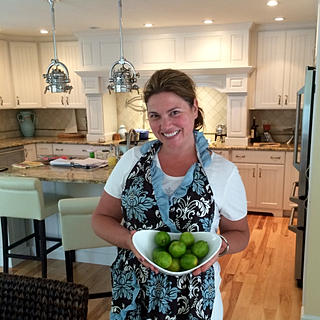Christiansborg Palace and the Royal Kitchen of Denmark
- Tricia Cohen
- Dec 16, 2016
- 2 min read
Updated: Dec 18, 2022

Christiansborg Palace is in the heart of the beautiful Danish city of Copenhagen. The picturesque site, located next to a canal, is gorgeous any time of the year. Unlike most grand European palaces, this Neo-Baroque-style structure is less than 100 years old. Since 1167, seven palaces and castles have been on this same site. The first structure on the site, Absalon's Castle, built in 1167, was small but mighty. After the death of Bishop Absalon, the Castle became a focus of a bitter feud between the church and the crown. After two centuries of attacks, occupation, and plunder, the mighty castle fell to disrepair and was demolished. For the next 800 years, several castles and palaces replaced each other on top of the Absalon site. In the sub-terrain of the current palace lies the bones of Absalon. The circular baking oven, built with bricks, is one of the still visible ruins.

The current palace, Christiansborg, was constructed in 1928 after the two previous Christiansborg Palaces burned to the ground. Quite often, small fires broke out of the poorly cleaned and superheated stovepipes, especially in colder months. The kitchen stoves are to blame for the palace fires in 1794 and 1884.





Since the monarch no longer lives in the palace, the grand kitchen sat silent. After many years, the legendary Royal Kitchen at Christiansborg has been fully restored to its former glory. And it is beautiful. Over two tons of shiny copper fill the basement room with light and vibrancy. The kitchen displays one of Europe's largest collections of copperware. The kitchen’s sole purpose is to give visitors a glimpse of what the kitchen would have looked like in its heyday. The kitchen is "set" for one of the most extensive dinners served in the palace in modern times. On May 15, 1937, to celebrate 25 years of King Christian X's rule, culinary delights were whipped up for 275 distinguished guests. The menu consisted of Ambassador soup, Filet of Sole à la Nantua, Tenderloin Bouquetière, Chicken Parisienne, Ice Cream Royale and dessert.

Historians have painstakingly researched the kitchen from Christian X's rule. They have located guest lists, table plans, and menus charting the history of Christian’s banquets and dinners. Christian's favorite meal was turtle soup, and to celebrate his love for this delicacy; there is a giant tortoiseshell on the wall in the executive chef’s office. Perhaps the shell reminded the chef always to consider the King when selecting a menu. Other menu items include a veritable feast of French gourmet cuisine, including chestnut soup and roasted black grouse. The French gastronomic mastermind, Escoffier, was well represented in the archives, including his famous cookbook from the 1900s.





